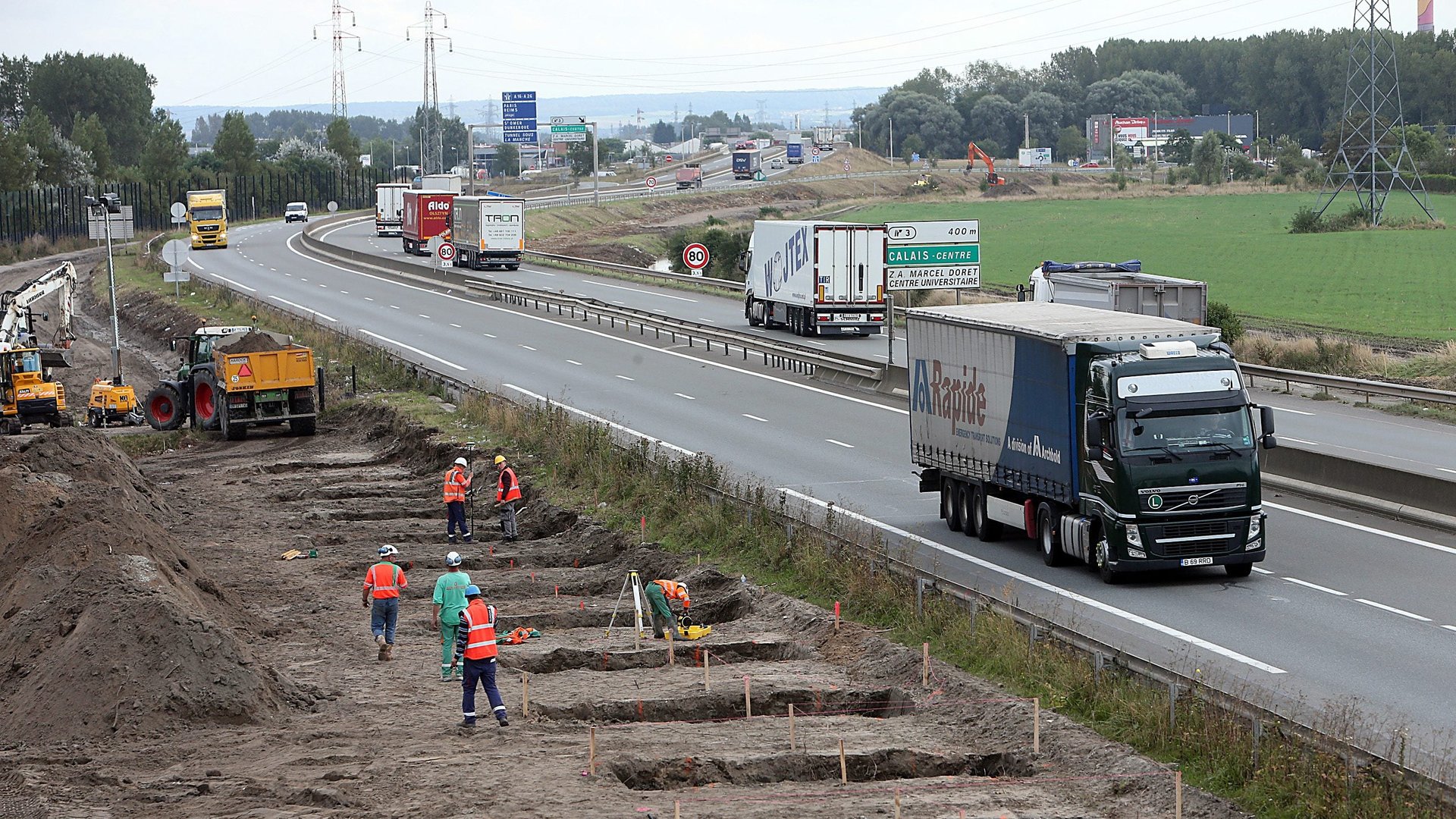The UK got France to build a big wall to keep migrants in
One of the most criticized proposals of Donald Trump’s campaign has been the Republican presidential nominee’s vow to build a wall between Mexico and the US, and make Mexico pay for it. But this week, with all eyes on the US elections spectacle and United Nations talks on refugee rights in New York City, France quietly began building its own big wall. And the UK is paying for it.


One of the most criticized proposals of Donald Trump’s campaign has been the Republican presidential nominee’s vow to build a wall between Mexico and the US, and make Mexico pay for it. But this week, with all eyes on the US elections spectacle and United Nations talks on refugee rights in New York City, France quietly began building its own big wall. And the UK is paying for it.
The much-anticipated “anti-intrusion wall” (link in French) is designed to stop migrants from illegally crossing into the UK through the French port of Calais. It will be four meters tall and about one kilometer (0.6 miles) long, with cameras on each side. Stretching along the road that leads to the harbor, the wall is an extension of high fences and barbed wire already in place, a fact which has led some to ridicule the new construction as unnecessary. Work began yesterday, Sept. 20 and is expected end in December. The project will cost an estimated €2.7 million ($3 million).

People trying to smuggle themselves into the UK have been known to hide on trucks crossing the tunnel between Coquelles, Pas-de-Calais in France and Dover, UK. The wall is hoped to prevent migrants from getting close to the vehicles. It will be covered with plants on its road-facing side, and plain concrete on the outer, migrant-facing side.
The UK has not been generous toward migrants this year. Although it agreed to take in 3,000 unaccompanied children seeking asylum in May, it has yet to do so. Of the estimated 7,000 to 10,000 migrants living in Calais’ informal migrant camp, known as “The Jungle,” about 1,000 are children.
Sealing off Calais might keep more migrants in France in the short-term, but by cutting off access to the UK, the French government may hope to dissuade asylum-seekers and migrants from entering its own territory. France has recently also taken measures to push back refugees and migrants from southern Europe, reinstating in August a document control at its Italian border in Ventimiglia.